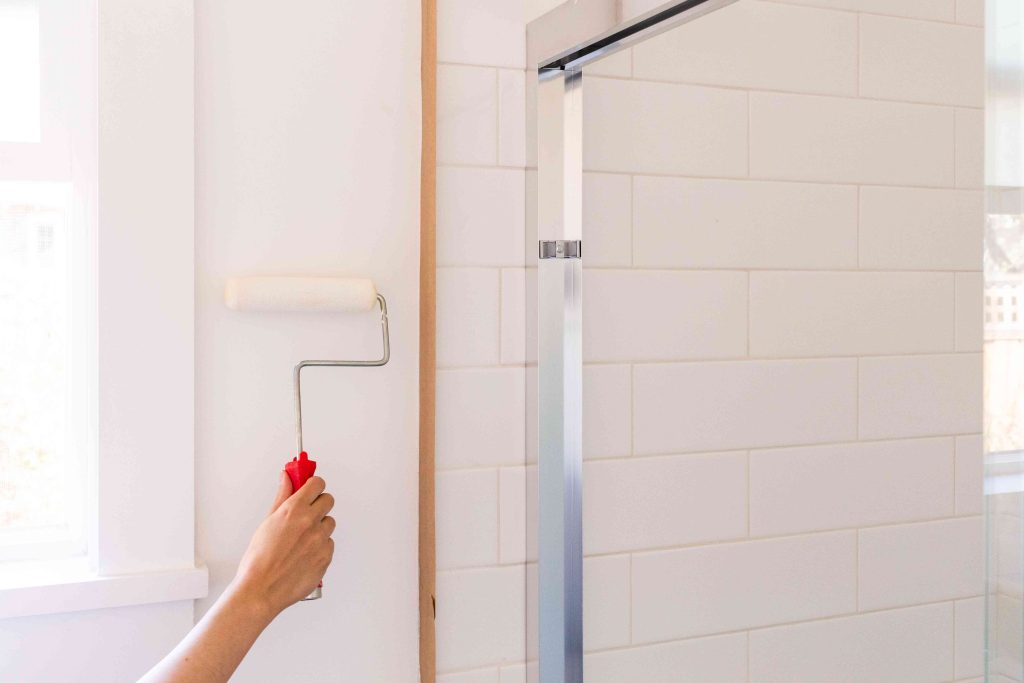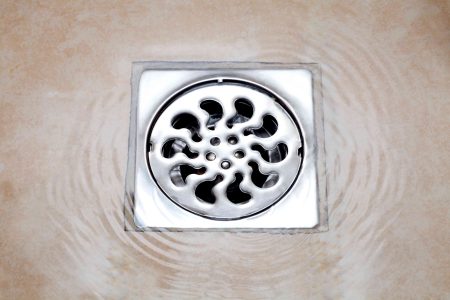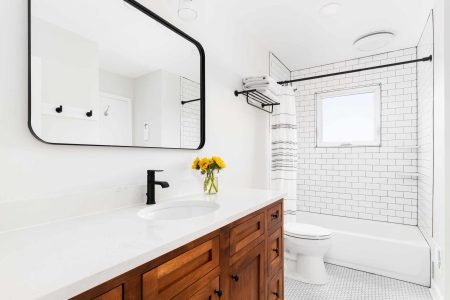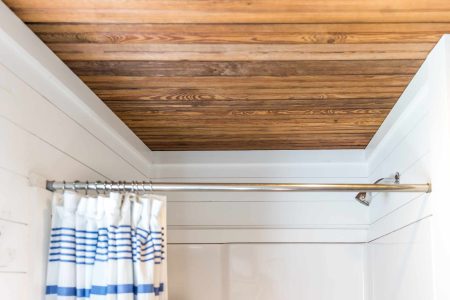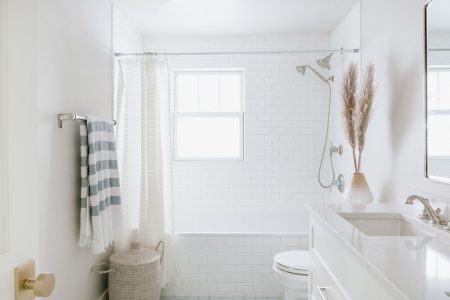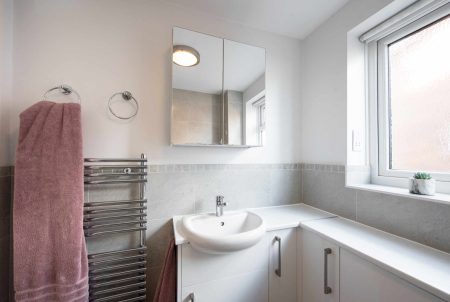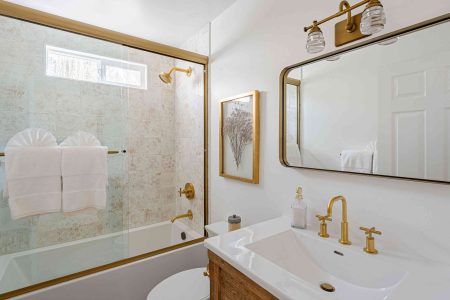Paint the bathroom ceiling and walls to give the space an instant boost. Whether you want to create a serene spa experience or a bright space to start your day off right, reinvent your bathroom with the right shade and finish of paint.
When planning to paint the bathroom ceiling and walls, remember to take into account the damp and humid conditions that may exist. Hot showers and sink splashes can lead to moisture on the walls and the paint you choose needs to be able to stand up to these conditions and resist mildew growth—a common problem in bathrooms.
Here are tips on how to choose the best type and finish of paint for bathroom ceilings and walls.
Oil Paint vs. Latex Paint
If you’re looking for the right type of paint for your bathroom, opt for a water-based latex paint. While oil paint has its reputation for durability and the ability to stand up to scrubbing—necessary qualities in a paint for bathrooms—it requires the use of mineral spirits for clean-up, dries slowly between coats, and releases high levels of volatile organic compounds (VOCs). There’s also the chance that oil paint will yellow over time, especially in low-light conditions.
Latex paint is a better pick for bathrooms for many reasons:
- Improved formulas: Many formulas today offer much-improved durability and moisture resistance.
- Washability: Latex paints will typically have a tighter molecular structure that doesn’t allow water to penetrate, meaning you can scrub away stains and residue without worrying about moisture from your cleaning efforts ruining your paint.
- Easy clean-up: Latex paint also means an easier clean-up because all you need is water to clean brushes and spills.
- Less toxic: You’ll also breathe easier in the small space when using a low VOC latex paint.
The Best Finish for Bathrooms
Picking the right finish for bathroom paint is a crucial part of ensuring that your painting project meets with success. The finish of the paint, or how matte or shiny it is, might seem like an aesthetic decision only. But the finish can determine how durable and mold-resistant your bathroom walls will be.
Semi-Gloss or Gloss Finishes
The best finish for a bathroom paint is semi-gloss or gloss. Semi-gloss paint is shiny and holds up to cleaning well, however, it can highlight imperfections on your walls. Both options will give you a finish with some shine that helps the paint resist absorbing extra moisture that leads to mildew growth.
Semi-gloss paint includes more resin and binders when compared to flat paint, and a glossy finish bumps up the amount of resins even more. As a result, you get a very tight molecular structure in these paint formulas. This is important when painting a bathroom for two reasons:
- Higher gloss paint will repel moisture. Rather than absorbing moisture and giving it a chance to collect and develop into mildew and mold, a wall painted with semi-gloss or glossy paint is more likely to see moisture evaporate away.
- A semi-gloss or gloss paint has a tougher formula and is better for washing and scrubbing with less wear and tear on the paint.
Flat Finishes
Flat paints have more pigment particles and less resin and binders. As a result, these paints have a rich color and low luster but are more prone to moisture infiltration. Additionally, they don’t stand up to scrubbing and it can be tough to clean walls with flat paint without affecting the finish. For these reasons, it’s best to pass on a flat finish paint for bathrooms. However, you may be able to get away with a flat or satin finish paint made specifically for bathrooms if used in a powder room, which is typically less humid.
Best Paint for Bathroom Ceilings
The bathroom ceiling should have a fresh coat of paint, too. The best paint for bathroom ceilings is one that will resist moisture and mildew. Avoid regular flat white paint and pick a satin or semi-gloss paint finish for a bathroom ceiling.
A satin finish is fine for a powder room ceiling because the space may have low moisture and humidity. But a very humid bathroom with a steamy shower requires a more durable and moisture-resistant semi-gloss finish for the ceiling. Semi-gloss paint does a better job of preventing the growth of mildew and mold that congregate in water spots and stains that tend to form on the ceiling of a humid space.
Warning
Do not paint over mildew growth. Take steps to clean and remove the mildew. Scrub existing mildew away with a bleach and water solution. Wear a respirator and gloves and keep the room well-ventilated. Seal up and dispose of cleaning materials. Then use a quality mildew-resistant primer before painting.
Read the full article here



